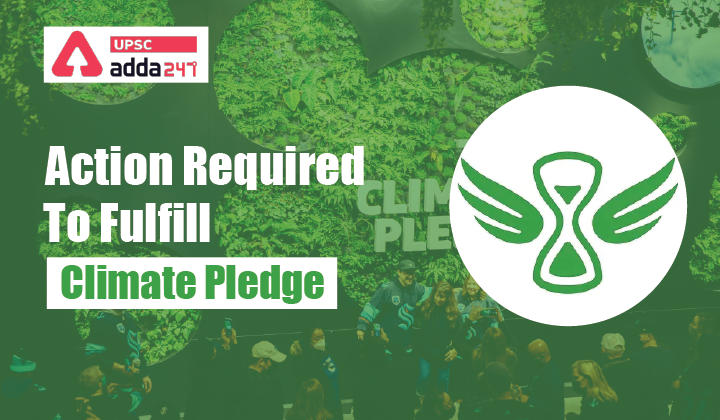”GS Paper – 2: Important International Institutions”
”GS Paper – 3: Conservation, Environmental Pollution & Degradation”
Why in News?
At COP26 in Glasgow, Prime Minister Narendra Modi announced that India will commit to ambitious, enhanced climate targets and cuts in carbon emissions in its Nationally Determined Contributions (NDCs).
India made a much-awaited declaration:
- To reach Net Zero emissions by 2070.
- There were promises to increase non-fossil fuel energy capacity to 500 GW, meet 50% energy from renewable energy, reduce emissions by one billion tonnes, and bring down the economy’s carbon intensity below 45%, all by 2030.
India surprised the world
- The announcement(Net Zero emissions by 2070).
- It came as a surprise given that India had given no assurances to visiting western climate negotiators before the conference, and had not filed updated NDCs by the deadline last month.
What was India’s earlier move?
- India did not “target a year” for ending net carbon emissions (ensuring carbon dioxide emissions are absorbed by the use of technology and lowering output) unless the developed world committed to funding India’s energy transition and enabled clean technology transfers on a much higher scale.
- We have also argued earlier that India could not switch to non-fossil fuel and end coal-based thermal plants unless it was made a member of the Nuclear Suppliers Group, where it is being blocked by China and a number of other countries.
By the end of this decade targets of India and several other countries:
- India would get half its energy from renewable sources by the end of this decade. India also demands that rich countries pay $1tn to help developing countries reach their climate goals.
- Vietnam said it would target net-zero by 2050, while Brazil is aiming to cut emissions by 50 per cent this decade.
- Joe Biden, the US president, also urged tougher action on emissions but did not announce any new moves, beyond the commitment made at the start of his presidency to cut emissions by 50 to 52 per cent by 2030 from 2005 levels.
- However, neither the US nor China, the world’s biggest emitters, came forward with any new progress on their climate policies.
Immediate action required:
- Fulfilling the pledges will require an almost immediate shift in the Government’s priorities if it wishes to meet its first few goals in just eight years.
- According to one estimate (the Centre for Science and Environment), the promise to reduce emissions by one billion tonnes would need a reduction in India’s carbon output by a massive 22% by 2030.
- On-Net Zero, the target of 2070 is two decades after the global goal at mid-century and would require the world’s other growing economies including China to peak emissions, preferably by 2030 itself.
- India meets about 12% of its electricity needs through renewable energy, and ramping that up to 50% by 2030 will be a tall task too.
How’ll India’s move will make a difference?
- If our country seriously works for fulfilling the promises made in Glasgow, India will be a global beacon in fighting climate change and ensuring sustainable development.
- At the least, it is hoped the commitments will inspire other countries to keep their word, particularly the developed world that has lagged behind in fulfilling combined promises of billions of dollars to fund emerging economies, LDCs and the most climate-vulnerable countries in the global South.
- When it comes to climate change, countries must remember they are not in competition with one another but trying together to outrun the clock.



 TSPSC Group 1 Question Paper 2024, Downl...
TSPSC Group 1 Question Paper 2024, Downl...
 TSPSC Group 1 Answer key 2024 Out, Downl...
TSPSC Group 1 Answer key 2024 Out, Downl...
 UPSC Prelims 2024 Question Paper, Downlo...
UPSC Prelims 2024 Question Paper, Downlo...




